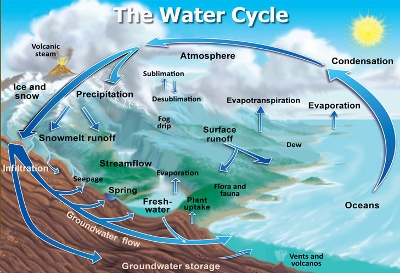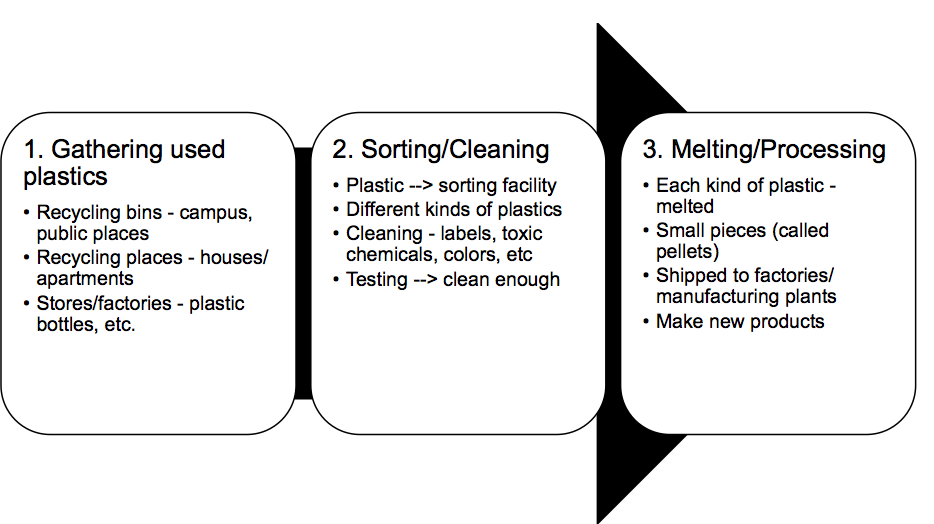|
As educators, our primary purpose is to prepare students to
succeed in the future by giving them tasks that they will likely
encounter. In teaching second language (L2) writing in an academic
setting, one challenge instructors face is creating level- and
content-appropriate writing assignments. On the one hand, authenticity
is an important goal, as students need practice with the type of writing
tasks they will see in their future coursework; on the other hand,
topics must be accessible and either dependent on prior background
knowledge or assigned with adequate scaffolding.
The writing curriculum of my intensive English program has
undergone quite a bit of change in the past couple of years as my
colleagues and I have tried to implement more authentic writing tasks
and achieve the balance described above. Student learning outcomes at
the intermediate and advanced levels centered on writing essays of
standard rhetorical forms, such as compare/contrast, problem/solution,
summary/response, and argumentative essays. We felt (and still feel)
that these outcomes build the skills necessary for students to perform
college-level writing. However, we used mainly liberal arts
topics—communication, culture, education, and roles of technology, for
example—because we felt they were accessible and did not present too
much of a cognitive demand on students. Indeed, these topics were
familiar to students and easy to write about.
Based on our internal needs assessments, however, it was clear
that many of our students were going on to majors in science,
technology, engineering, and math (STEM), and needed more authentic
tasks and topics. This realization led to an effort in our writing
program to incorporate different types of tasks and a shift to more
STEM-based topics. In this article, I outline and discuss some of these
writing assignments, which I have used in my own classes.
STEM-Based Tasks
Hands-on Science Activities With Short-Answer Writing
In many cases, I simply wish to give students writing practice
using STEM-related prompts, rather than requiring them to craft complete
essays. I was drawn to activities from elementary school science
classes because they were hands-on and engaging; they were also basic
enough that they did not require sophisticated content background.
One activity was to make homemade flashlights. After reading
some articles and reviewing diagrams of electric circuits and their
components, I gave students a AA battery, a small light bulb, copper
wire, paperclips, and cardboard and tape for mounting. After they all
spent some time assembling the flashlights, each group had quite
unique-looking flashlights, some of which worked more successfully than
others. Following the hands-on activity, I asked the students to write a
short paragraph explaining how their flashlight worked. Sample language
included sentences such as:
First, the electricity flowed from the battery
terminal into the contact on the end of the light bulb. The filament
inside the bulb illuminates and emits light. The electricity flows out
again and through the copper wire to the negative electrode on the
battery. A switch on the wire can either break the circuit or let the
electricity continue flowing.
Another activity involved growing bacteria cultures. I asked
our department to order two sets of petri dishes prefilled with agar. In
groups, students decided which surfaces to swab for their cultures.
After an incubation period, they observed their cultures to see how much
the bacteria had grown and answered a series of short-answer questions
about what happened, which required the use of target vocabulary.
Questions included, “Describe the procedure used for collecting
bacteria,” and “How much did the bacteria replicate?” Key vocabulary
included bacteria, exposure, surface, replicate, incubate, and other content words that we had learned previously in the
course.
Process Writing Assignments
One of the rhetorical patterns in our textbook, which had not
been previously used, was the process pattern. We had been focusing
mainly on the summary/response and argument essays, which promote
critical thinking. However, I realized that the process essay might be
more representative of some of the technical writing our students would
be required to do in STEM classes. In developing the process-writing
component, the main challenge was developing STEM-related prompts that
did not require too much technical background information. Ultimately,
the most successful prompts were those involving diagrams with basic
text (e.g., key words or phrases), such as the water cycle and recycling
of plastic.
For the water cycle prompt, students were
given a diagram providing them with the most important vocabulary: precipitation, evaporation, runoff, water table, transpiration,and condensation (see Figure 1). They were
then asked to expand their ideas on each step of the water cycle using
examples and details. They also incorporated transitions and signal
words and statistics from outside sources. Given the technical nature of
these topics, students were inclined to take explanations and
definitions from the Internet, and I had to revisit the rules of
citation to avoid plagiarism. Overall, the students did well with this
assignment and seemed to enjoy a fresh topic (ecology) to write
about.
Figure 1. Sample prompt given about the water cycle (Evans & Perlman, 2013).

Next, as an in-class writing assignment, students wrote about
how plastics are recycled, basing their essays on a three-step flow
chart that provided them with some key points (see Figure 2).
Figure 2. Sample prompt given about recycling plastic.

In this case, my aim was to assess their description skills,
not their knowledge of recycling. Although the goal was not necessarily
to stimulate creative thinking, it was clear from their essays which
students applied themselves to really build and develop their ideas and
which students simply wrote about the basic points on the flowchart. In
either case, this was a topic that students were able to write about
without the need for extensive outside research or specialized
background knowledge.
Lab Reports
One of the initial purposes of delving into STEM writing was
that one of the engineering professors at our university expressed
general frustration about international students not being able to
adequately write lab reports in terms of grammar and format. After
reviewing authentic sample lab reports that the professor provided, I
led two brief in-class activities to teach the basic components of a lab
report: introduction, procedure, results, and conclusion.
The first activity, done together as a class, involved watching
a short YouTube video of a man conducting an experiment to determine how
much sugar is in a can of soda. Together, we wrote a short paragraph
including the purpose statement, materials used, steps, and finally, the
outcome. The second activity required students to write a few
paragraphs based on a set of lab notes I had written, reporting on a
fictitious experiment to test the effectiveness of three types of hand
sanitizers. These notes included the research question, a list of
materials, brief notes on the procedure, and the results, including
photos of the bacteria growth in petri dishes. Students were then able
to utilize the information from the notes and what they observed from
the images to draw conclusions as to the most effective product.
Together, these two smaller writing assignments worked well to provide
my students with a more authentic context to describe a process and
discuss the results. This work also provided the groundwork for them to
conduct and write about their own hands-on lab.
Lab Simulation
Planning a lab for ESL students can be challenging due to
constraints in facilities, equipment, and technical knowledge. Because I
needed something for students to do in the classroom, I fell back on a
previously studied topic: the absorbency of diapers. From experience, I
knew that students enjoyed the process of extracting the tiny granules
from a diaper and watching them expand to absorb a large quantity of
dyed water. This time, however, I wanted to expand the activity to
compare three brands of diapers. In pairs, students took one diaper from
each brand to collect qualitative data on each, including softness and
elasticity. They also recorded the dimensions of the diapers and their
cost. Then, they measured the absorbency by pouring dyed water onto each
diaper and recording the amount at saturation, which provided an
engaging hands-on activity on which to base their papers.
In a multidraft formal report, students included an
introduction on the purpose of this experiment. The second section was a
description of each diaper, based on their notes, and the third section
described in detail—using the passive voice, where possible—the
procedure used to measure absorbency. Below is an (unedited) example
from one student, showing effective use of the passive voice:
Once the measurement and observation were taken, each edge of
diaper were cut to extract its granules which is found on the padding of
the diaper. After extracting the granules, they were poured into a
plastic cup. Then, colored water, which is used to give better
visibility in absorbency, was added until the material was saturated.
Eventually, the capacity of the water that was observed was
recorded.
Finally, the conclusion of their reports gave a recommendation
of which brand was the best buy overall based on the results of their
experiment.
Conclusion
The activities above illustrate that using STEM topics provided
engaging and authentic writing practice and preparation for the types
of writing many L2 students will see in their university coursework. It
can be challenging to select topics that are basic enough not to need
extensive preparation and/or background knowledge, but I have found
using elementary science topics to be effective with and engaging to
students. These topics naturally provide good opportunities to use the
grammar structures learned in class, such as sentence combining,
transitions, and the passive voice, and STEM-based writing has provided a
refreshing change from our program’s once heavily liberal arts–laden
topics.
Reference
Evans, J., & Perlman, H. (2013). Water-cycle diagram
(English). U.S. Department of the Interior & U.S. Geological
Survey. Retrieved from https://water.usgs.gov/edu/watercycle.html
Heather Torrie is the testing coordinator in the
English Language Program at Purdue University Northwest. She has been
teaching academic writing for the past 9 years. |

